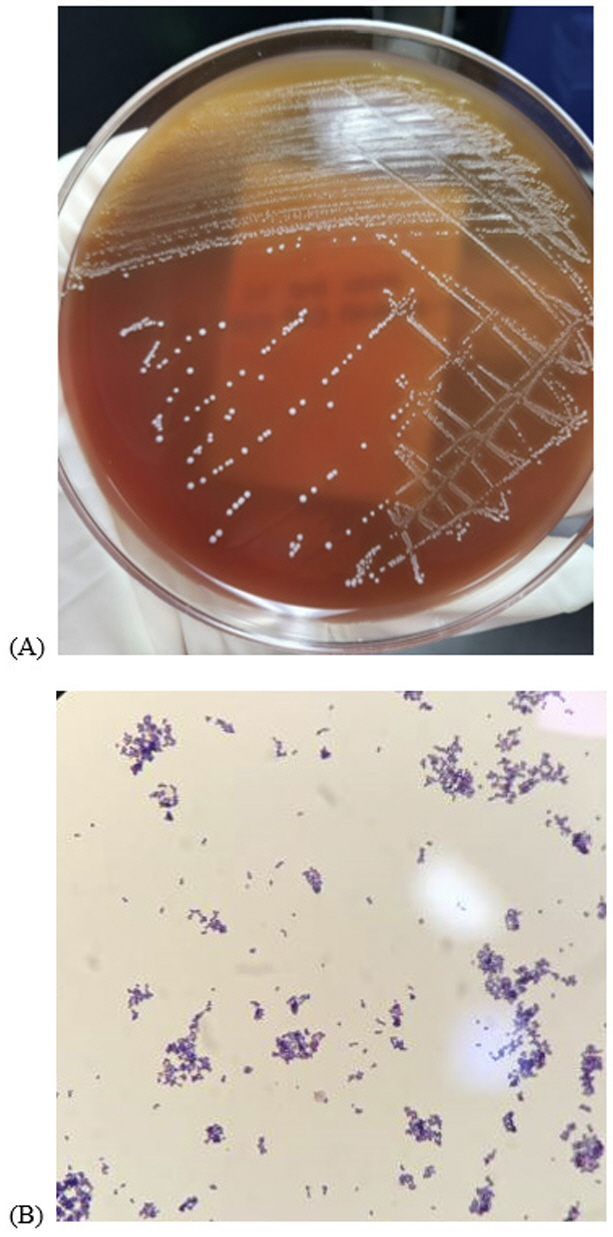Ann Clin Microbiol.
2022 Dec;25(4):155-162. 10.5145/ACM.2022.25.4.5.
Evaluation of the Biofire Filmarray pneumonia panel for the detection of bacterial respiratory pathogens and antimicrobial resistance genes in endotracheal aspirate specimens
- Affiliations
-
- 1Departments of Laboratory Medicine, Ajou University School of Medicine, Suwon, Korea
- 2Departments of Pulmonary Medicine, Ajou University School of Medicine, Suwon, Korea
- KMID: 2537134
- DOI: http://doi.org/10.5145/ACM.2022.25.4.5
Abstract
- Background
Rapid detection of the causative agents is essential for determining the appropriate treatment for patients with lower respiratory tract infections. We evaluated the performance of the Biofire FilmArray pneumonia panel (FA-PE; BioFire Diagnostics, USA) in the identification of bacterial pathogens and antibiotic resistance genes in endotracheal aspirate specimens.
Methods
A total of 43 non-duplicated endotracheal aspirates were included in this study. The performance of the FA-PE was assessed using the routine culture method as the reference standard.
Results
The FA-PE demonstrated 92.9% sensitivity and 79.3% specificity for the identification of 15 bacterial targets compared to routine bacterial culture. Four antimicrobial resistance genes in 43 specimens were detected by the FA-PE. The most frequently detected resistance genes were mecA/C and SCCmec in three specimens, followed by CTX-M in one specimen.
Conclusion
The FA-PE offers a rapid diagnostic method for lower respiratory tract infections. It may be useful at the early stage of pneumonia, before routine culture and antimicrobial susceptibility results are available.
Figure
Reference
-
1. Collins MD, Hutson RA, Falsen E, Sjöden B, Facklam RR. Description of Gemella sanguinis sp. nov., isolated from human clinical specimens. J Clin Microbiol 1998;36:3090–3. .2. Geller SA. Infective endocarditis: a history of the development of its understanding. Autops Case Rep 2013;3:5–12. .3. Hubers SA, DeSimone DC, Gersh BJ, Anavekar NS. Infective endocarditis: a contemporary review. Mayo Clin Proc 2020;95:982–97. .4. Baddour LM, Wilson WR, Bayer AS, Fowler VG, Tleyjeh IM, Rybak MJ, et al. Infective endocarditis in adults: diagnosis, antimicrobial therapy, and management of complications: a scientific statement for healthcare professionals from the American Heart Association. Circulation 2015;132:1435–86. .5. Mugunthan M, Bhalla S, Shete V, Grover N. Gemella sanguinis: a rare cause of native valve endocarditis in a child. Med J Armed Forces India 2016;72S:84–6. .6. Lee SH, Cho DK, Lee HM, Lee SC, Kim IT, Park HB, et al. Infective endocarditis caused by Gemella sanguinis in a hemodialysis patient. Korean J Med 2009;77:899 .7. Emmanouilidou G, Voukelatou P, Vrettos I, Aftzi V, Dodos K, Koumpouli D, et al. A case report of successful conservative treatment for infective endocarditis caused by Gemella sanguinis. Case Rep Infect Dis 2019;2019. .8. Maraki S, Plevritaki A, Kofteridis D, Scoulica E, Eskitzis A, Gikas A, et al. Bicuspid aortic valve endocarditis caused by Gemella sanguinis: case report and literature review. J Infect Public Health 2019;12:304–8. .9. Yang CH and Tsai KT. Gemella sanguinis endocarditis: first case report in Taiwan and review of the literature. J Formos Med Assoc 2014;113:562–5. .10. Sideris AC, Zimmermann E, Ogami T, Avgerinos DV. A rare case of isolated mitral valve endocarditis by Gemella sanguinis: case report and review of the literature. Int J Surg Case Rep 2020;69:51–4. .11. Clinical and Laboratory Standards Institute (CLSI). Methods for antimicrobial dilution and disk susceptibility testing of infrequently isolated or fastidious bacteria; CLSI guideline M45. Wayne; PA: 2016. .
- Full Text Links
- Actions
-
Cited
- CITED
-
- Close
- Share
- Similar articles
-
- Rapid Direct Identification of Microbial Pathogens and Antimicrobial Resistance Genes in Positive Blood Cultures Using a Fully Automated Multiplex PCR Assay
- A Giardiasis Case Diagnosed by Wright’s Stain and BioFire FilmArray Gastrointestinal Panel Assay Using Stool Sample
- Comparison of Sputum and Nasopharyngeal Aspirates for Molecular Detection of Community-Acquired Pneumonia Pathogens
- Evaluation of Seeplex(TM) Pneumobacter Multiplex PCR Kit for the Detection of Respiratory Bacterial Pathogens in Pediatric Patients
- Evaluation of Allplex Respiratory Panel 1/2/3 Multiplex Real-Time PCR Assays for the Detection of Respiratory Viruses with Influenza A Virus subtyping


